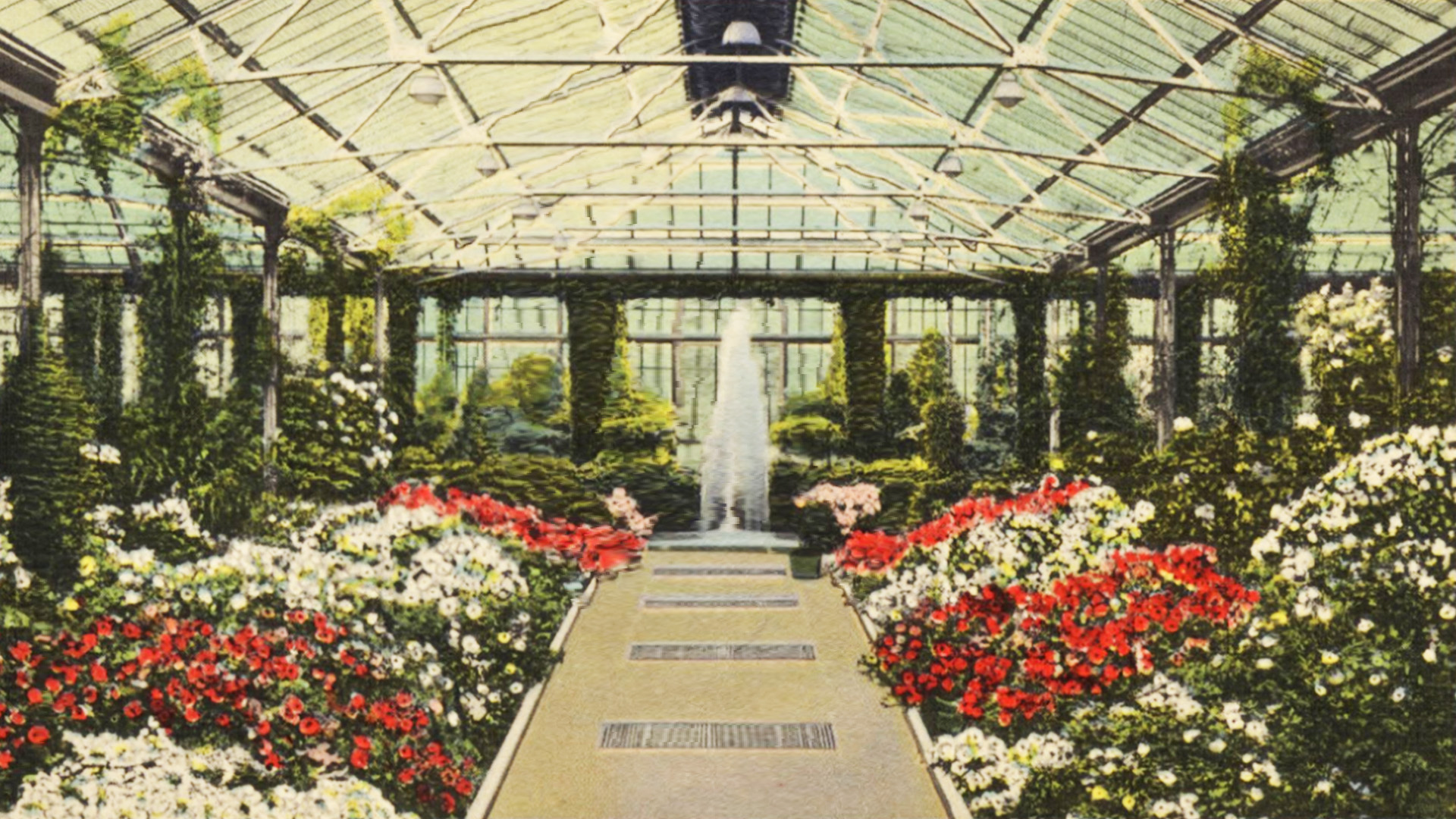
Longwood Gardens: Retro Edition
By David Cardillo, Digital Initiatives and Preservation
Longwood Gardens, a part of the Pierre S. DuPont estate, has long been known for its botanical aesthetic. Walking paths wind through indoor and outdoor gardens, complemented by fountains and light displays. The displays are thematically enhanced for Christmas, and for 2023, the theme is “A Very Retro Christmas.
In celebration, we’re highlighting digitized postcards from our collections that feature Longwood Gardens and date back as far as 1907. This subset of postcards is part of the Delaware Postcard Collection, which consists of more than 2,000 postcards of Delaware and nearby areas.
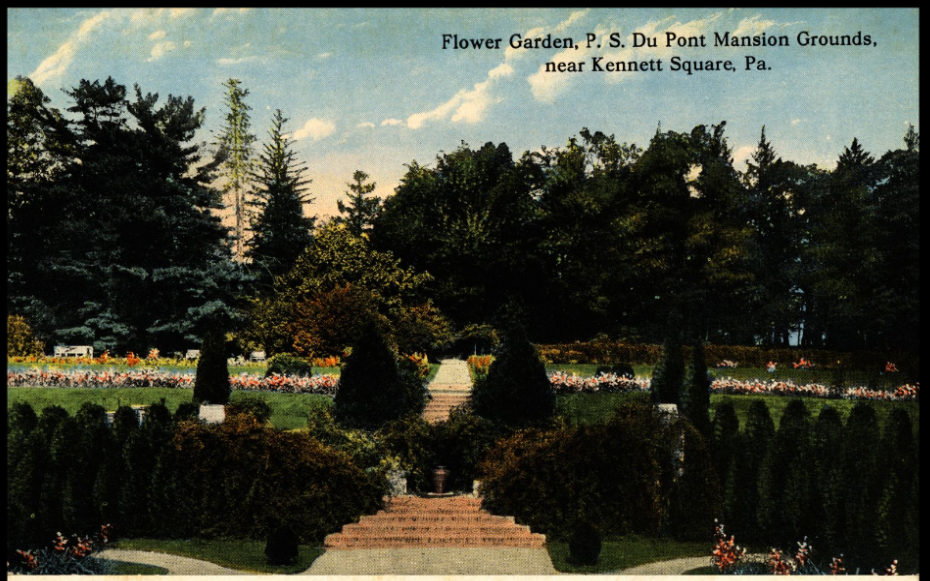
Postcard of the Flower Garden on the P.S. DuPont Mansion Grounds, 1907
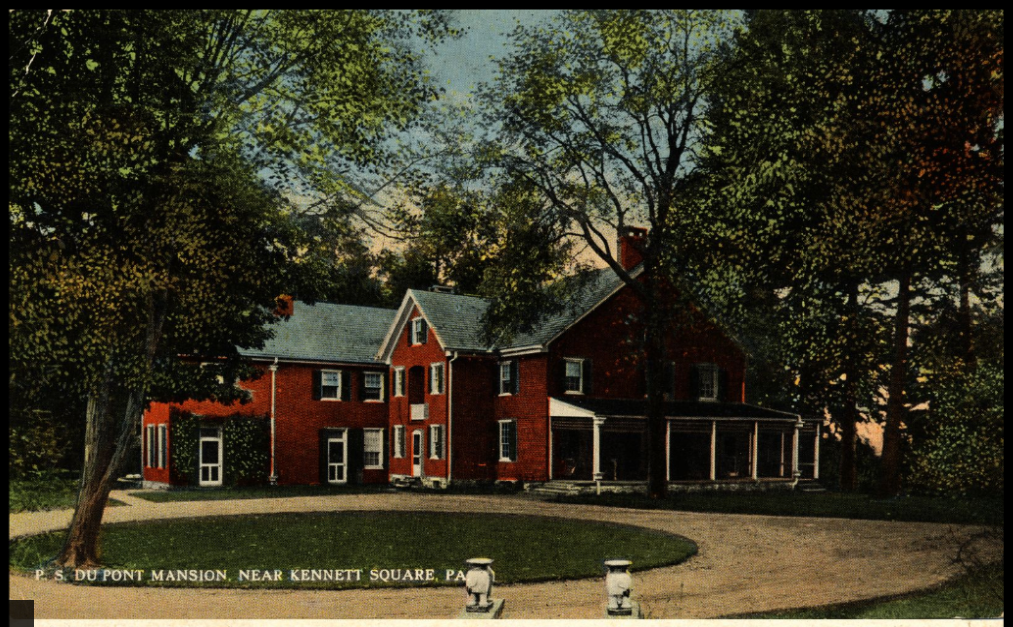
Postcard of the P.S. DuPont Mansion, 1907
The external grounds offer several unique examples of botanical geography, such as the Sunken Gardens illustrated below.
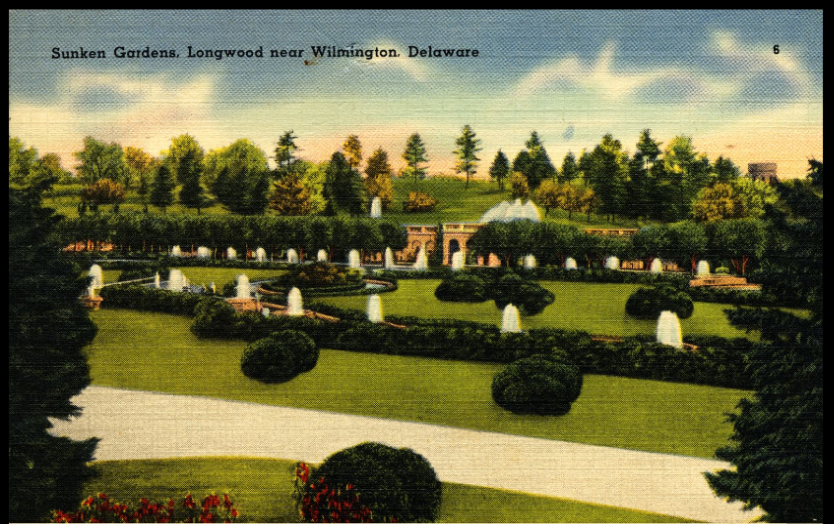
Postcard of the Sunken Gardens, 1930s.
Some areas blend architectural artistry and flowering fauna, such as with the Sundial in the Peony Garden.
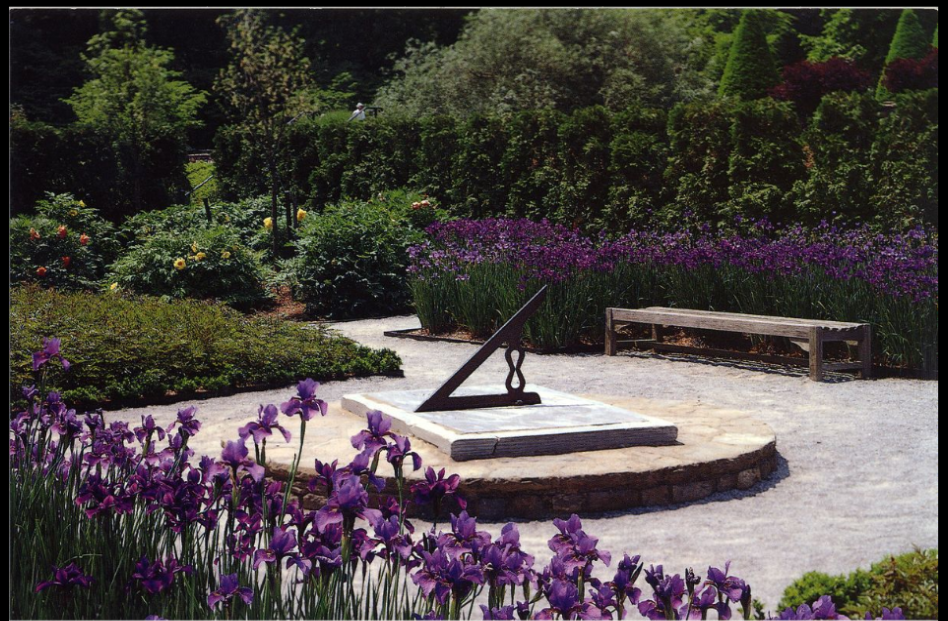
Postcard of a Sundial in the Peony Garden, 1990.
The fountains in the Water Garden are also known to draw crowds.
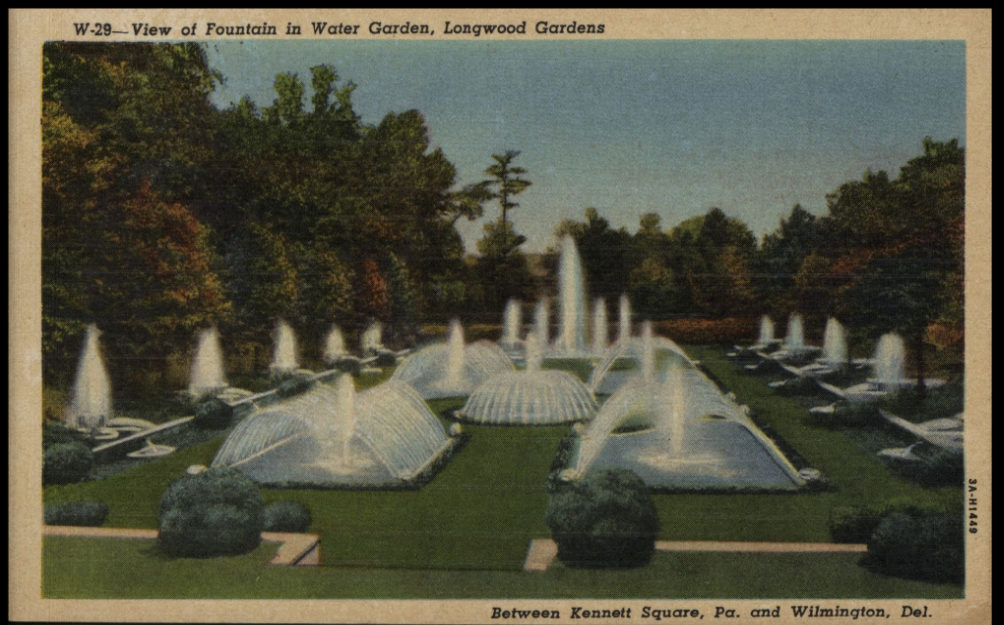
Postcard of the Fountains, 1950
The indoor exhibitions are just as impressive. Some exhibits rotate while others are on long-term or permanent display. Below is such an example with the Azalea Room Exhibition.
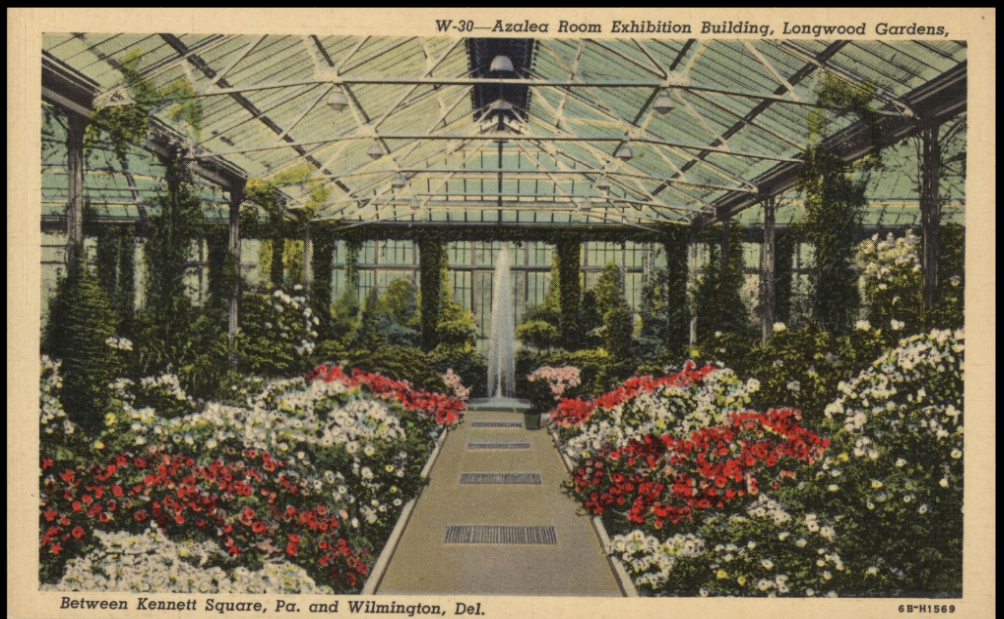
Postcard of the Azalea Exhibition, 1950
The indoor exhibitions allow for a controlled environment amid the region’s ever-changing and unpredictable weather patterns. For a 1997 exhibition of tropical plants and flowers, Longwood Gardens was able to simulate the tropical rainforest environment needed. This allowed patrons to experience an ecosystem and botanical beauty that was quite foreign to the area.

Postcard of the Tropical Touch Exhibition, 1997.
For more than a century now, Longwood Gardens has been a destination for horticultural beauty. More than that, it has brought botanical experiences from around the world close to home through special exhibits. Hopefully it will continue to foster a deep appreciation for nature, both indoors and out, for centuries to come.
The Delaware Postcard Collection consists of more than 2,000 postcards of the First State and nearby areas from the 19th and 20th centuries. The postcards often depict well-known Delaware buildings, monuments and views, as well as elements of small-town life. They are made freely and digitally accessible through the Library, Museums and Press. Researchers interested in material culture, local history, state and neighborhood development, and all things Delaware may find these resources especially useful.
